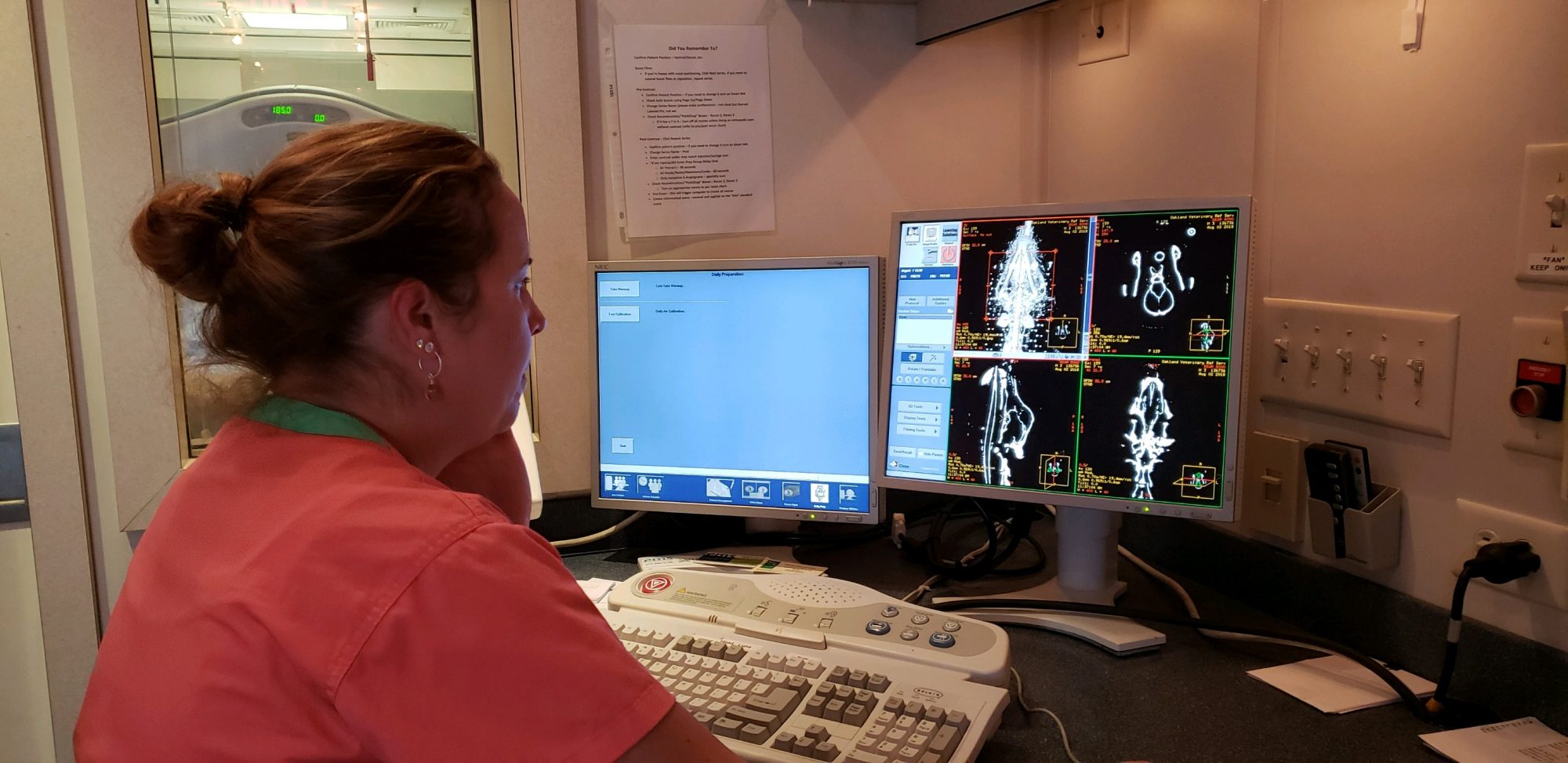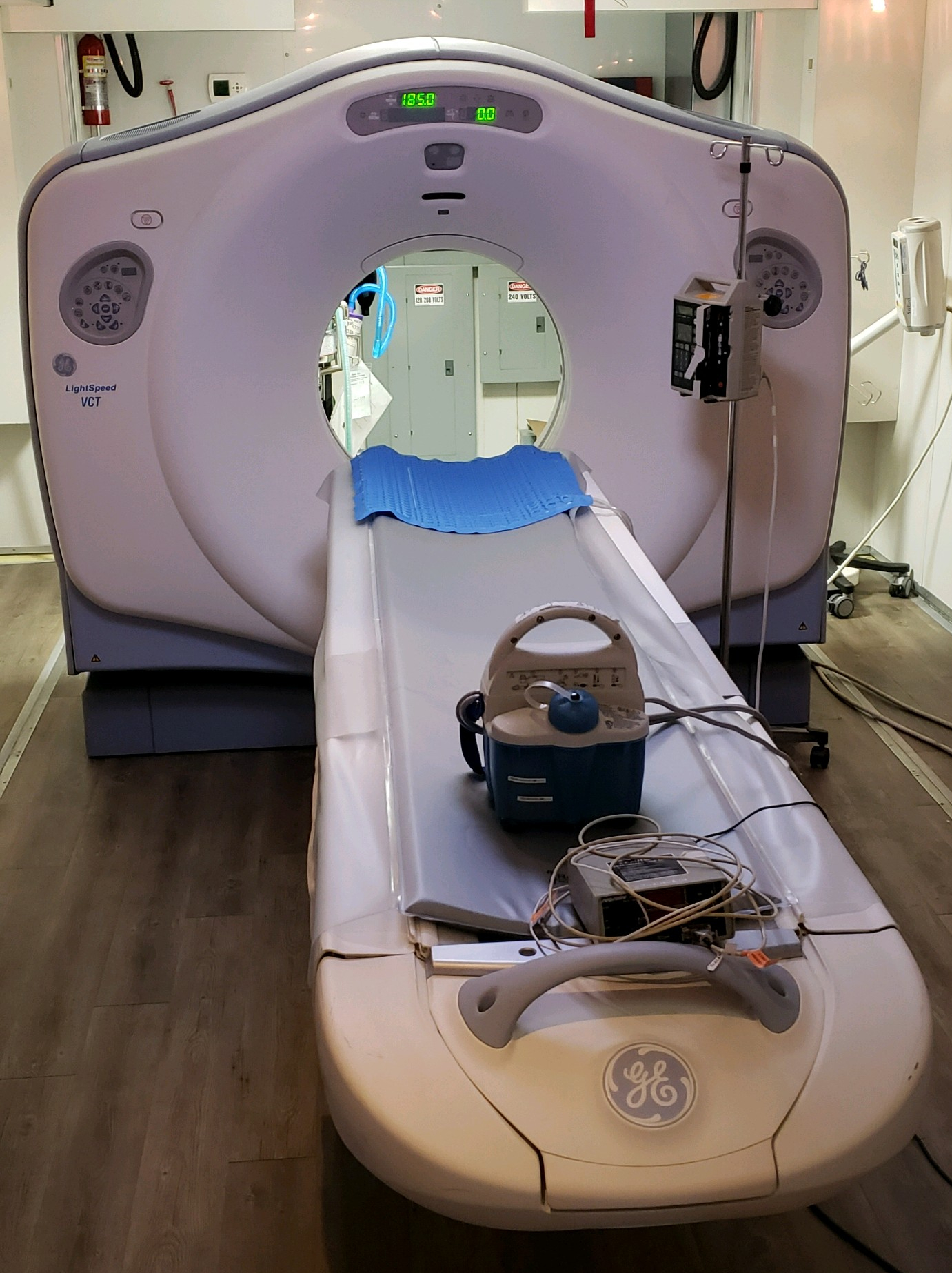3D Diagnostics: The Advantages of Veterinary CT Scans for Pets
 If you have experienced a trauma or illness related to the internal organs, you may be familiar with CT imaging, or CAT scans. They are an important tool in modern human medicine in reaching accurate diagnoses. Veterinary CT scans for pets have much the same advantages. They allow for a more detailed look into the health of tissues and organs.
If you have experienced a trauma or illness related to the internal organs, you may be familiar with CT imaging, or CAT scans. They are an important tool in modern human medicine in reaching accurate diagnoses. Veterinary CT scans for pets have much the same advantages. They allow for a more detailed look into the health of tissues and organs.
CT scanning provides a three-dimensional image of the internal body. This ability to see inside the body can provide greater success in detecting and treating problems affecting our animal companions. The team at Oakland Veterinary Referral Services is here to explain why this powerful technology can help us diagnose and treat a slew of health conditions that impact our animal friends.
How Do CT Scans Work?
Computerized tomography, or CT, is a process of taking X-rays from different angles. It obtains and displays a cross-section of the area of the body being scanned. Unlike the two-dimensional picture an X-ray captures, CT scans allow your veterinarian to see the complete bodily structure.
When your pet requires a CT scan, they will need to be sedated using anesthesia. It is administered by a trained technician and overseen by a veterinarian. The sedation is to help your pet remain calm and still throughout the procedure, as any slight movement will corrupt the quality of the images. At OVRS, CT scans are overseen by our board-certified veterinary radiologist, Dr. Rachel Smith, DACVR.
Once your pet is sedated, they will be moved into the scanner. It resembles a large, white donut. The scanner X-rays start spinning, capturing the images used to build an internal picture. A contrast dye may be used intravenously to accentuate soft tissues and blood vessels.
CT imaging is safe and does not harm the body. Pre-scan lab work will be conducted to ensure your pet is healthy enough for anesthesia. Your pet will be monitored throughout the CT Scan procedure, as well as after the procedure, for their safety and well-being.
Why Are CT Scans Needed?
 When a problem is suspected, yet cannot be seen by a simple X-ray, a CT scan may be recommended for a more detailed analysis. There are many situations in which a regular X-ray or ultrasound cannot provide the visual detail that is available through the use of CT scanning. CT scans are particularly useful in detecting issues, such as:
When a problem is suspected, yet cannot be seen by a simple X-ray, a CT scan may be recommended for a more detailed analysis. There are many situations in which a regular X-ray or ultrasound cannot provide the visual detail that is available through the use of CT scanning. CT scans are particularly useful in detecting issues, such as:
- Nasal disease
- Head trauma
- Lung diseases
- Middle and inner ear disorders
- Tumors
- Orthopedic conditions, such as hip dysplasia and joint degeneration
- Brain or spinal conditions
- Dental disease, such as abscess
Many times, CT scans are performed for cats and dogs with a cancer diagnosis to determine whether and by how much the cancer has spread.
CT Scanning for Pets at OVRS
OVRS has cutting-edge diagnostics that can better assist in detecting many types of diseases and conditions commonly affecting pets. One of these is our new CT scanner, which is used to diagnose the above listed health conditions. It is especially useful for angiograms, to visualize the blood vessels, arteries, and heart chambers.
Our team works closely with referring veterinarians to provide additional diagnostic insight, as well as throughout treatment to manage the progression of certain diseases.
If you believe your pet might be better supported through CT imaging, we would love to discuss this with you and your veterinarian. We are here for you, and welcome referring veterinarians to discuss their concerns. Please do not hesitate to call our team.


